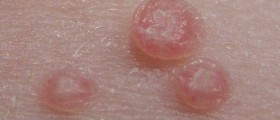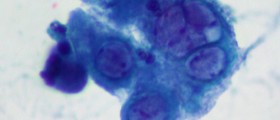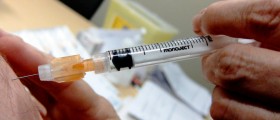Genital warts are a problem that needs to be treated as soon as it is detected. Many problems can arise if the treatment is not conducted. We will see in the following text what genital wart is and what stages of this condition there are.
Human papillomaviruses are responsible for the creation of this condition. The genital warts produce abnormal skin growths that are located in the genital region. This problem, also called venereal wart, condyloma acuminatum, and verruca acuminata, creates these growths which are pink, red, or white and are very contagious.
Sexual contact is the most common way of spreading this disease. This problem can even be passed to other people without the individual’s realization of the presence of this disease. In other words, a problem may not even cause any symptoms, so a person can transfer the virus without even knowing it. The immune system has to be strong to fight off this virus. Cancer and infection can occur if the problem is not treated.

Genital Warts Stages
The early realization of the disease is very important for the treatment and prevention of transferring an infection. We will give you information on stages of the genital warts so that you can identify the problem at the appropriate time.
During the initial several months after the infection, there will be no symptoms present. After this period, itching and redness will be present in the inner thigh area.
After this comes the swelling and itching, and this is the time a doctor is needed if you are sexually active. This period will last for several days, after which the genital area will start to show small lumps, usually blue, red, pink, or white. During some period after their creation, the pain will not be experienced. But they will grow in size and pain over time.
Lips and mouth can be affected by these lumps, but this happens very rarely. Women may suffer from these warts on the vaginal canal entry and bleeding during the intercourse is common in such cases. In some cases, this area may be moist and damp.
There are some serious complications possible if the treatment is not conducted. Penis, anus, vulva, or cervical cancer may be created if genital warts are not treated.
- It was recently reported that 10.6% of women aged 18-45 years in northern Europe have had genital warts (GWs) and that the incidence of GWs among young women is rising. In the United Kingdom, for example, GWs are now the most prevalent venereal disease and the number of reported cases has increased by almost ten times within the past 30 years. The treatment of GWs is often long and of varying efficacy. In Denmark, a country with 5 million inhabitants, 17% of women aged 20-29 years have had GWs. The Danish National Health Board has estimated that annual expenditure on treatment of GWs is approximately 3.9 million euros.
- To obtain an in-depth understanding of patients' perceptions of genital warts, we used qualitative focus-group interviews with five men and five women aged between 18 and 30 years who had genital warts. The interview guide was based on a literature review that identified important issues and questions. The data were analysed using a medical anthropological approach.
- Patients' experiences were related to cultural conceptions of venereal diseases and the respective identities and sexuality of the sexes. The disease had negative psychological and social effects both for men and for women and it affected their sex and love lives, in particular.
- The psychological burden of the disease was increased by the uncertain timeline and the varying effectiveness of treatment. We identified a need for more patient information about the disease and its psycho-sexual aspects.
Treatment
Treatment has to be conducted immediately after the problem has been detected. Several procedures can remove these warts, such as electrocautery, which uses electrical current, or cryotherapy, which uses liquid nitrogen to freeze the genital warts.
Laser surgery is one of the most popular treatment methods of today. But know that virus will not be always removed with surgery. The virus may remain in the body. In the end, we recommend vaccination for genital warts, but only for females.

















Your thoughts on this
Loading...